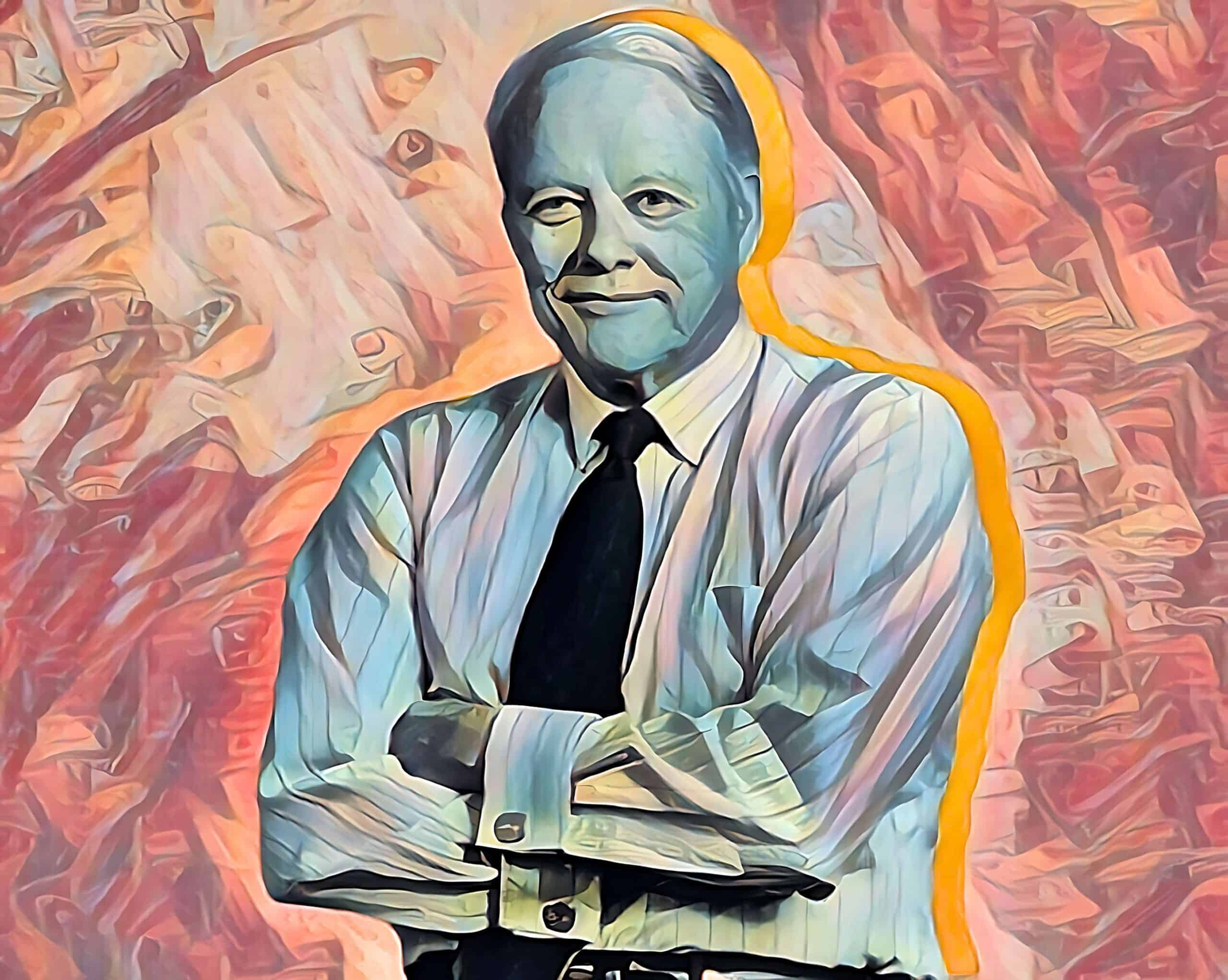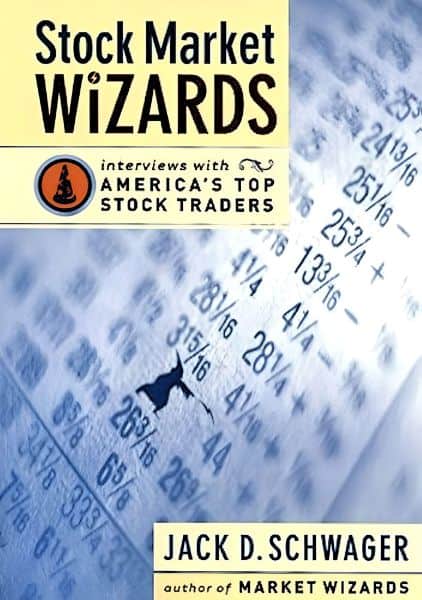William O’Neil is a highly successful investor and businessman who is the definition of an American success story. Born in Oklahoma during the Great Depression and raised in Texas, O’Neil started his financial career as a stockbroker for Hayden, Stone and Company in 1958. It was there that he began his research that formed his remarkably effective investment strategy. By pyramiding the profits in three exceptional back-to-back trades during 1962-1963, he managed to turn an initial $5,000 investment into $200,000.
O’Neil went on to use his investment winnings to buy a seat on the New York Stock Exchange and to form William O’Neil and Co., an institutional research brokerage firm. The firm was a leader in offering comprehensive computerized stock market information and today is one of the most highly respected research firms in the country.
O’Neil also launched Investor’s Business Daily in direct competition to the Wall Street Journal, all while maintaining his impressive track record as a stock investor — averaging over a 40% annually on his investments.
The following is William O’Neil’s trading strategy broken down and explained:
William O’Neil’s Stock Market Approach: CAN SLIM
In Jack Schwager’s book Market Wizards, O’neal explained:
So the first thing I learned about how to get superior performance is not to buy stocks that are near their lows, but to buy stocks that are coming out of broad bases and beginning to make new highs relative to the preceding price base. You are trying to find the beginning of a major move so that you don’t waste six or nine months sitting in a stock that is going nowhere…
In addition to the “new high” criteria, O’Neil conducted further research on the characteristics of past stock market winners and devised an analysis model and trading strategy called: CAN SLIM.
The CAN SLIM approach is a seven-step procedure that enables traders to identify high-potential growth stocks. The acronym stands for:
- C: Current earnings
- A: Annual earnings
- N: New products, management, or markets
- S: Supply and demand
- L: Leader or laggard
- I: Institutional sponsorship
- M: Market direction
Let’s take a closer look at these steps:
William O’Neil on Current Earnings
The “C” stands for current earnings per share. The best-performing stocks showed a 70 percent average increase in earnings for the current quarter over the same quarter in the prior year before they began their major advance. I am continually amazed by how many individual investors, and even pension fund managers, buy common stocks with unchanged or lower current quarter earnings. There is absolutely no reason for a stock to go up if the current earnings are poor. If, as our research demonstrated, the best stocks had large profit increases before they advanced rapidly in price, why should anybody settle for mediocre earnings? So, our first basic rule in stock selection is that quarterly earnings per share should be up by at least 20 to 50 percent year to year.
Stocks such as Dell, Cisco, America Online, Google, and Apple all had significant earnings increases in the quarters leading up to their major price advances:
- Dell’s earnings per share surged by 74% and 108% in the two quarters before its price increase in November 1996. It rose 587% in 61 weeks.
- Cisco posted earnings gains of 150% and 155% in the two quarters ending October 1990, prior to its significant run-up over the next three years — $0.08 per share to $1.80 per share.
- America Online’s earnings were up 900% and 283% before its six-month burst in October 1998 where it quickly rose 451%.
- Google showed earnings gains of 112% and 123% in the two quarters before it made its spectacular debut as a public company. Its initial public offering (IPO) price was $85 per share in 2004, and by the end of 2006, its stock price had risen to almost $500 per share.
- In 2004, Apple’s earnings increased by 350% in the quarter before it took off, and its next quarter was up another 300%. Apple’s stock price went from $12 per share to $202 — a near 17x increase in just 45 months.
William O’Neil on Annual Earnings
The “A” in our formula stands for annual earnings per share. In our studies, the prior five-year average annual compounded earnings growth rate of outstanding performing stocks at their early emerging stage was 24 percent. Ideally, each year’s earnings per share should show an increase over the prior year’s earnings.
To confirm a company’s latest results aren’t temporary, it’s important to review its annual earnings growth rate. O’Neil recommends looking for an annual EPS that has increased for the last three consecutive years.
- Xerox grew at a 32% annual rate before its shares rose 700% from March 1963 to June 1966.
- Wal-Mart had a consistent annual growth rate of 43% before rocketing 11,200% from 1977 to 1990.
- Priceline.com doubled its earnings from 96 cents a share to $2.03 between 2004 and 2006, before tripling its stock price in the next five quarters.
- Google expanded its earnings from 55 cents a share in 2002 to $2.51 a share in 2004 before its stock climbed from $200 to $700 by 2007.
William O’Neil on New Products, Management, or Markets
The “N” in our formula stands for something new. The “new” can be a new product or service, a change in the industry, or new management. In our research, we found that 95 percent of the greatest winners had something new that fell within these categories. The “new” also refers to a new high price for the stock. In our seminars, we find that 98 percent of investors are unwilling to buy a stock at a new high. Yet, it is one of the great paradoxes of the stock market that what seems too high usually goes higher, and what seems too low usually goes lower.
Here are some examples of companies that experienced massive success thanks to something new:
- The completion of the transcontinental railroad by Northern Pacific in 1883 was a significant milestone in the history of the railroad industry. The company’s stock price saw a remarkable increase of 4,000% in just 197 weeks.
- McDonald’s low-priced fast-food franchising resulted in a significant profit for stockholders, with a massive increase in its stock price of 1,100% from 1967 to 1971.
- Cisco Systems made tools that let companies connect their computers over long distances. The stock rose nearly 2,000% from November 1990 to March 1994 and an unbelievable 75,000% from 1990 to 2000.
William O’Neil on Shares Outstanding
The “S” in the formula stands for shares outstanding. Ninety-five percent of the stocks that performed best in our studies had less than twenty-five million shares of capitalization during the period when they had their best performance. The average capitalization of all these stocks was 11.8 million shares, while the median figure was only 4.6 million. Many institutional investors handicap themselves by restricting their purchases to only large-capitalization companies. By doing so, they automatically eliminate some of the best growth companies.
Companies that consistently buy their own stock in the open market over time (especially small to medium-sized growth companies) are usually a good bet. Fewer shares in the market means that less buying is required to send prices higher. With less supply, demand will more easily push up prices.
William O’Neil on Leaders and Laggards
The “L” in our formula stands for leader or laggard. The 500 best-performing stocks during the 1953–1985 period had an average relative strength of 87 before their major price increase actually began. [The relative strength measures a stock’s price performance during the past twelve months compared to all other stocks. For example, a relative strength of 80 would mean that the given stock outperformed 80 percent of all other stocks during the past year.] So, another basic rule in stock selection is to pick the leading stocks—the ones with the high relative strength values—and avoid the laggard stocks. I tend to restrict purchases to companies with relative strength ranks above 80.
Home Depot is a prime example of a leading company in the retail sector that saw a tenfold increase in growth from 1988 to 1992. During this period, Home Depot’s stock price went from $0.59 per share to a peak of $11 per share, an increase of 1766%.
In contrast, IBM was a laggard in the computer industry during the bull market of 1979-1980, with its stock price dropping from $18.28 per share to $12.24.
William O’Neil on Institutional Sponsorship
The “I” in the formula stands for institutional sponsorship. Institutional buyers are by far the largest source of demand for stocks, and leading stocks usually have institutional backing. However, while some institutional sponsorship is desired, excessive sponsorship is not, as it could lead to significant selling if anything goes wrong with the company or the market in general. This is why the most widely owned institutional stocks can be poor performers. By the time a company’s performance is so obvious that almost all institutions own a stock, it is probably too late to buy.
Despite the potential benefits of institutional sponsorship, investors should not assume that any stock is invincible. Even successful stocks can experience downturns, as evidenced by Xerox’s placement on the William O’Neil + Co. sell list in 1974 at $115. Institutional investors continued to buy Xerox, leading to significant losses when the stock eventually tumbled. Investors should not rely solely on analyst recommendations or a stock’s popularity but should also take into account a company’s financials and market conditions.
William O’Neil on Market Direction
The “M” in our formula stands for market. Three out of four stocks will go in the same direction as a significant move in the market averages. Therefore, it is essential to learn how to interpret price and volume on a daily basis for signs that the market has topped.
Investing in stocks when the broader market is making new highs is a great bet. But when the market is falling, don’t expect to pick winners — most stocks will plummet along with the market. Our team at Macro Ops updates our market research each week to keep track of where the general market is trending.
The Perfect William O’Neil Trade
William O’Neil’s perfect CAN SLIM trade requires the following:
-
- C: Current earnings — quarterly earnings per share should be up by at least 20% year over year
- A: Annual earnings — the 5 year average earnings growth rate should be a minimum of 24% and the annual EPS should have increased for the last 3 consecutive years
- N: New products, management, or markets — a company should have a new product, service, management, change in its industry, or its stock price should be making a new high
- S: Supply and demand — market cap should be below 25 million shares
- L: Leader or laggard — the stock should be a leader in its sector and industry
- I: Institutional sponsorship — there should be institutional interest in the stock
- M: Market direction — the general market needs to be in an uptrend
By focusing on CANSLIM, traders can increase their chances of success and build a profitable trading strategy. However, as with any market approach, it’s essential to continue researching and developing strategies while cautiously navigating the market.
If you want more lessons from legendary investors like William O’Neil, check out our free guide on the strategies of the most successful traders here.










